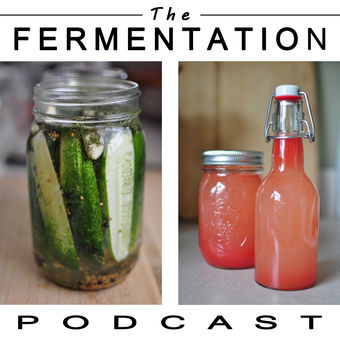
The Fermentation Podcast
The Fermentation Podcast
Join me on this journey to put fermentation into practice, create culture, and revive this lost art that connects all of us to our past cultures.
- 1 secondEpisode 24 – Tara Whitsitt of Fermentation on Wheels
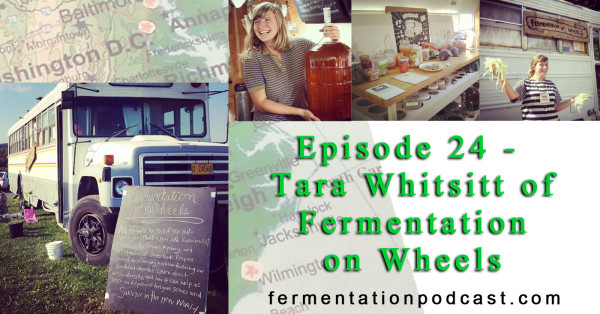
Today I have on the show an interesting girl named Tara Whitsitt, whose mission it is to teach people across the country about fermentation and how she does that is she travels in a bus she’s called Fermentation on Wheels.
She has a mobile fermentation lab that drives across the country and gives workshops on how to ferment, make wine, sauerkraut, pickles and any other number of tasty treats that she comes across. She also hosts a culture swap and truly spreads the culture as she travels and meets people from place to place.
She recently had a great article in the New York Times about her calling her The Johnny Appleseed of Pickling.
I enjoyed hearing the highway “on the road” type of feel that was recorded in her background noise and hope you enjoy our conversation.
TOPICS INCLUDED IN TODAY’S FERMENTATION PODCAST:
- Tara explains what the Fermentation on Wheels project is about and what she’s trying to accomplish with it
- She talks about how she’s been traveling since 2013 and the many places her fermentation bus has visited and where she’s taught workshops at
- How communities of people are similar to the communities on the microscale of bacteria and microorganisms that we work with in fermentation and our cultures
- She goes into the challenges of traveling on the road with different ferments and how some don’t like the agitation like vinegary kombucha and others like wines and water kefir seem to enjoy it
- After her recent publicity being in the New York Times and being called “The Johnny Appleseed of Pickling” she talks about some of the notoriety has been very positive and helpful in her goals and gives her a credibility that makes it much easier to find places to host her
- Along with the notoriety comes more work which can be a balancing act with life
- Tara talks about how she has such a passion and desire to learn and how it drives her to keep reaching out to people
- She goes back in time to 2011 when she first got into fermenting and what some of her first ferments were that she made being sauerkraut and pickles
- One of things she tells people is that with fermentation, one of the main things is that you just keep trying and keep experimenting with the raw ingredients that you love
- She goes into what her workshops are like and how she makes a community out of the event and ties each workshop to the last and the next workshop and people get to taste the previous batches and make new batches for the upcoming community
- Tara talks about the makings of how the Fermentation on Wheels bus came to be and how and opportunity presented itself for a change of life and how a couple travelers inspired her with their adventures in a converted bus
- She talks about how a dream turned into reality and from then on created a mission and went school bus shopping which led her to a woman that was so interested in her dream she wanted to help get it off the ground
- She goes over how residing in a bus over the long term, especially in colder climates requires modifications like a wood burner stove and some other interesting projects relating to fermentation like her 3-tier fermentation station
- Another one of Tara’s fermentations early on was wine making and she goes into that with types of wine she’s made from fruit, the type of yeast she likes the best, and also some on different types of cyser she enjoys making which is an apple honey wine
- Not only does she ferment but she visits farmers on the road where she can ferment a variety of different organic produce to make tasty ferments
- From a picture of blueberries on her website, she describes a beer that she made into a blueberry mint lemon balm ale
- Having a kegerator on the bus and making beer and wine proves to be nice barter items that she can trade for things on her travels
- Since she’s travels all over while fermenting, she talks about how temperature can be a challenge while fermenting and how the bus can get fairly hot and also fair cold
- You can say that Tara has quite a large collection of ferments and she talks about how sometimes she has to let some of them go and then picks up new cultures on the way like her many kombucha cultures
- She talks about how she’ll make the exact same drink like a water kefir with the same ingredients but use a different culture and how they can turn out tasting different
- She talks a bit about sourdough and how she doesn’t have an oven on the bus but likes to make sourdough pancakes on the bus
- Speaking of sourdough, she has a 90 year old sourdough starter from Alaska with an interesting starter feed and a 10 year old rye sourdough starter, and yet another that’s fed with a sauerkraut brine instead of water
- She talks a bit about meeting Sandor Katz and staying with him for a few days in Liberty Tennessee
- Surprisingly she admits the hardest thing about travelling is actually driving the bus
- If she had only a handful of ferments she could bring off her bus in a hurry, which ones would they be?
- She talks a bit about jun which is green tea kombucha that’s fed with honey
- How having a culture swap and selling cultures can be a good source of incoming to help Fermentation on Wheels
- She goes into what happens if she gets mold and her thoughts on it and even a case of black soldier fly larvae which are amazing composters
- Tara talks about what she uses as fermentation vessels and using rocks as fermentation weights for her jars
- I bring up my new favorite snack that I’ve been making which is Melanie Hoffman’s recipe of Pickle Me Too of fermented Indian spiced cauliflower
- Tara gives some of her thoughts on the health aspects of fermentation and if she notices any health benefits from it
- She also gives beginners some good advice and helps to calm people’s fears on getting involved in fermentation and joining the community of people who love to do this
RECIPES MENTIONED IN TODAY’S SHOW:
LINKS FOR TODAY’S SHOW:
- Subscribe to Email (to get updates on blogs & new shows)
- Subscribe on iTunes
- Subscribe on Stitcher Radio (Android, iPhone, etc.)
- Like us on Facebook
- Follow us on Twitter
- Follow our boards on Pinterest
- Tara Whitsitt – Fermentation on Wheels
- Donate to Fermentation on Wheels
- The NY Times article on Tara – The Johnny Appleseed of Pickling
I’d love to hear your thoughts on today’s show so be sure to comment below or if you have an idea for the show, email me at paul at fermentationpodcast.com or just click on the Contact button on top of this page and fill out the form. I look forward to hearing from you!
13 March 2015, 12:00 pm - 1 secondEpisode 23 – Karen Ross of The Probiotic Jar
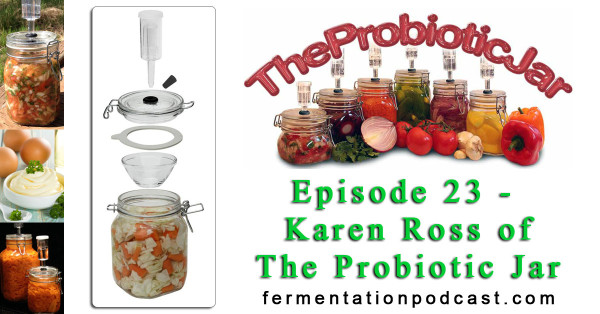
I have today on the line Karen Ross, who is the creator of The Probiotic Jar, to talk about health in general and the process of anaerobic fermentation using an air-lock instead of the old-school mason jar method that I’ve been using.
I mention at the beginning of the show how there are things that circulate in the fermentation community about different methods of how to ferment pickles and other things and I think they all have their place.
On a scale of good, better, and best (with best being much farther down the scale than the other two), after using The Probiotic Jar, I think this method is just about the best you can get. If you’re like Karen, who I consider to be in the arena of a fermentation purist when it comes to the quality of a ferment and excluding oxygen and mold, and if you might be hypersensitive, then anaerobic fermentation using an airlock is by far the method you should be looking into.
The offerings out there are starting to be many whether that ends up being a ceramic crock with a water moat like from Mark Campbell Ceramics, the Kraut Source that’s stainless steel, or like we’ll be going over today, The Probiotic Jar, which is glass and also has a very handy glass bowl perfectly fitted to weigh down your ferment and have the ability to skim off oxidized brine as well as a guaranteed smooth hole in the top of the lid to make sure no oxygen gets in.
Anyways, I hope you enjoy today’s conversation and make sure to join the conversation below!
TOPICS INCLUDED IN TODAY’S FERMENTATION PODCAST:
- A bit from me on the different fermentation jars and crocks and the power of anaerobic fermentation
- Karen tells her story how she got into fermentation, coming across Sally Fallon Morrell’s book Nourishing Traditions, and how she couldn’t eat ferments created the general aerobic way that was taught due to her body not being able to process ferments because of the byproducts and chemicals that were created, so she looked for better fermentation vessels
- How Karen met Lisa Herndon of Lisa’s Counter Culture and how they were looking for a better way to ferment which led them to the idea of a fermentation vessel that didn’t leak oxygen
- Why they decided to use the Fido jar style jars over mason jars to create the system for anaerobic fermentation
- The big considerations when creating The Probiotic Jar, the availability worldwide, and how far they’re reaching people now
- Karen gives her thoughts on the difference between fermenting using other methods like the mason jar method vs an anaerobic fermentation of an air lock
- Her health crisis ten years ago of living in a house filled with mold and the challenge of regaining her health
- Karen’s theory (which I feel is correct and right along the lines of permaculture thinking of natural systems in composting) is that lactic acid bacteria clean up mold and if you give them a perfect environment, free of oxygen, they will multiply, dominate their environment, and clean it up, giving you the highest quality ferment possible
- Three ways that spoilage is either reduced or cleaned up in a ferment – reduce or eliminate oxygen, lower the pH, or add large amounts of salt versus what you can do in The Probiotic Jar
- Some great conversation on the compounds that mold forms and how it’s not just the mold spores and filaments that are bad for you, it’s the compounds that mold creates and how lactic acid bacteria and clean those up and deactivate them
- A question on whether or not to add starters like whey to a ferment that’s just starting out and how you don’t need it in The Probiotic Jar
- The strains of bacteria naturally occurring on vegetables vs the cultures required to make dairy ferments and how the process is different
- Explaining the process of back slopping and using a previous brine from a ferment to start a new one and the health benefits you might be missing from aging a ferment from start to finish to success through all the possible successions of beneficial bacteria
- All of the toxins that we come into contact in our everyday lives and how beneficial microbes can help counter those toxic effects
- How Karen still thinks the Harsh-style ceramic crocks with the water moat are still great vessels to ferment in and how no one fermentation vessel is perfect
- Can you ferment something in The Probiotic Jar, then transfer it to mason jars to hold for storage?
- Making sourdough starter in The Probiotic Jar and how that it can make your starter more resilient, last longer, and not oxidize as well as allow you to feed it less often
- Karen Ross’s food lifestyle and how she follows the Weston A. Price foundation’s principles
- How Karen loves Himalayan sea salt versus any other salt when she has the choice
- The 8 different sizes of The Probiotic Jar, what might be good to make for each size, and the 3 liter jar being the most popular size
- Starting a family business involving fermentation and the experience of a home-based business
- Karen talks about the great stories people have shared with her about getting their health back and how it keeps her doing the important work of changing people’s lives for the better through healthy fermentation
- Karen points out the idea that if water was absolutely anaerobic in nature, then fish would suffocate and the ingenious little glass brine bowl that solves the problem of too much brine being exposed to the air
- Making beet kvass in The Probiotic Jar and how the brine bowl helps to catch all of the oxidizing foam, which then when you scoop off, preserves the flavor
- Common questions people have when first using their probiotic jar such as overflow into the air lock with heavy gas producing ferments like cabbage
- The difference between the larger three piece airlock and the two piece air-lock on The Probiotic Jar
- Things not to do in The Probiotic Jar liked cooked food since there’s no lactic acid bacteria left to colonize and how to tell if food has gone bad in 3 easy signs
- The peace of mind in knowing that properly fermented vegetables are safer than raw vegetables
- Some of Karen Ross’s favorite ferments and recipes for beginners and intermediate fermenters like homemade fermented mayonnaise
- She also talks about what she teaches at her workshops including misconceptions like putting oil on top of a ferment which can harbor botulism
- Tips on fermenting in the winter time like fermenting foods in season, moving a thermometer around your house to find the perfect warm spot, and also using seedling heating mats, or even an ice chest and a hot water bottle
- Karen’s future plans to get into making fermented fish and cheese
- One last common question people ask about smelly ferments like garlic
- Some ideas on learning from other cultures that are different than us and the Ariana Mullins episode
- Starting to ferment slow using whatever method is available to you is better than no fermenting and easing yourself into eating it
RECIPES MENTIONED IN TODAY’S SHOW:
- Probiotic Jar Recipe Index
- Fermented Beet Kvass Recipe
- Carrot Stick (Herbed or Plain) Recipe
- Cold, Sinus & Flu Tonic Recipe
- Lacto-fermented Granola with Dates, Pecans, and Coconut Recipe
- Lacto-fermented Mayonnaise Recipe
LINKS FOR TODAY’S SHOW:
- Subscribe to Email (to get updates on blogs & new shows)
- Subscribe on iTunes
- Subscribe on Stitcher Radio (Android, iPhone, etc.)
- Like us on Facebook
- Follow us on Twitter
- Follow our boards on Pinterest
- The Probiotic Jar
- The Probiotic Jar Raffle for a free system
- The Probiotic Jar Free How-To Videos
- Lisa’s Counter Culture
- Top 8 Reasons Why Ferment Storage Matters
I’d love to hear your thoughts on today’s show so be sure to comment below or if you have an idea for the show, email me at paul at fermentationpodcast.com or just click on the Contact button on top of this page and fill out the form. I look forward to hearing from you!
6 February 2015, 1:30 pm - 1 secondEpisode 22 – Lisa Herndon of Lisa’s Counter Culture
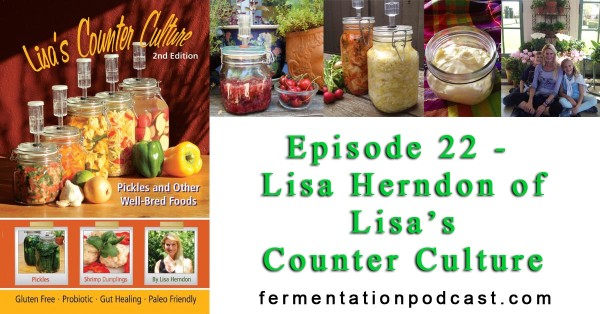
Today on the show I welcome Lisa Herndon of Lisa’s Counter Culture. She loves fermented foods and her goal is to get people healthy using food as the main driver in her holistic approach to health and well being.
Her tagline on her website is “Whole Food, Add a Twist of Probiotics, Gluten Gone”. She would describe herself as belonging somewhere in the paleo / primal diet arena but really her focus is on whole, real foods that promote health while trying to limit health robbing foods and you can see that with her tenet being “be mindful and eat real food.”
She says she can go on for hours on fermentation recipes, ideas, and topics and she teaches workshops to get people started in the San Francisco Bay area. I received a copy of her book “Lisa’s Counter Culture, 2nd Edition” and it doesn’t disappoint with a wide variety of recipes and techniques. I would describe her fermentation philosophy is as clean as possible with her use of The Probiotic Jar and while I venture out of that philosophy quite regularly, we could all learn a thing or two from Lisa.
I hope you enjoy today’s episode. Happy fermenting!
TOPICS INCLUDED IN TODAY’S FERMENTATION PODCAST:
- How long has Lisa been fermenting
- Lisa’s food philosophy being paleo and real, whole foods and what she leaves out that doesn’t seem to work well with her body being alcohol, gluten, and soy
- Fermenting grains like rice and legumes like lentils together into a batter to make an Indian fermented dosa which is a thin crepe-like pancake that you can then stuff other sides inside
- Lisa’s preferred methods to ferment things being The Probiotic Jar and the reasoning behind her choice including some people not tolerating ferments without an anaerobic fermenter and also the taste difference
- Her thoughts on the differences between anaerobic fermentation jars vs. ceramic crocks and mold
- How long she keeps her ferments around after fermenting and how long do ferments last when properly stored
- What one of Lisa’s fermentation workshops covers such as making fermented dosas, chutneys, among several other things like kombucha and kefir, and what she tells people fermenting for the first time
- She talks about some of the stranger or less common ferments that she’s made such as brussel sprout kimchi, celery cucumber apple kombucha, or any other interesting flavor combinations she can come up with like using golden beets rather than red beets for a unique flavor
- The size of her ferments varies according to how much she wants rather than other people’s methods like when Sandor Katz will make a 50 gallon barrel of pickled radish
- We go through Lisa’s book “Lisa’s Counter Culture, 2nd Edition”
- She talks about her favorite fermented beverages and how she doesn’t stick to one single beverage and rotates through them seasonally and also at the same time likes to use fermented brines like sauerkraut brine as a drink
- Some nice uses for pickle juice or fermented brine like making salad dressing and even making pickle juice popsicles!
- When freezing ferments, how you might lose about 10% of the probiotics
- Fermenting things in the winter having its own challenges and some of the tips and tricks to overcome that such as heat mats like seedling mats or hot water bottles in a cooler
- The easiness of making mesophilic yogurt which is a “cold” yogurt that you can make at room temperature rather than having to keep a sustained heat of 105 to 110 degrees
- One ferment that is a daily part of her family’s diet is dairy kefir and a bit about using raw milk
- Lisa says fermenting roots and tubers like potatoes & sweet potatoes reduces or eliminates acrylamide which is normally created when frying starches or heating them to high temperatures
- She goes into the process of heating starches, cooling them, and either heating them again or eating them cold to form a resistant starch which she says makes it easier for some people to have starches
- Fermenting salsas and chutneys for short periods of time since they are fruits and fruits have a higher sugar content so you should see some good bubbling activity
- Lisa’s thoughts on ferments and the health benefits she’s seen in herself and people that she tries to help regain their health
- How her kids actually don’t crave sugar as much as the average kids would and prefer the more sour or tangy flavors of ferments and what are some great ferments for kids
- How she lives an alcohol-free live since those are some ferments that don’t seem to add value or make her feel great
- She goes into her method of showing people’s lab results and how food choices can affect that and goes into the vegan/vegetarian lifestyle
- She talks a bit about how people are different and even in different parts of their lives, their tastes can change such as she always hated eggplant and getting pregnant gave her a taste for it
- What her friends and family thinks about this fermentation stuff and people she meets at workshops
- Lisa talks about future endeavors in writing a possible ebook in pressure cooking or a small update to Lisa’s Counter Culture
- She mentions that she writes articles for Paleo magazine pretty regularly so if you happen to get an issue, you might see an article in there from her
- Her future ferments seem to be similar to others where she’d like to try fermenting fish and I mention a podcast where I had Ariana Mullins on about making fermented fish sauce and ginamos
- Lisa gives some parting thoughts for beginners in fermentation and also her thoughts on pink Himalayan sea salt as well as Celtic sea salt and the differences she sees
RECIPES MENTIONED IN TODAY’S SHOW:
- Fermented Fries Recipe
- Spiced Fermented Watermelon Rind Recipe
- Fermented Spanish Black Radish Recipe
- Fermented Persimmon Chutney Recipe
LINKS FOR TODAY’S SHOW:
- Subscribe to Email (to get updates on blogs & new shows)
- Subscribe on iTunes
- Subscribe on Stitcher Radio (Android, iPhone, etc.)
- Like us on Facebook
- Follow us on Twitter
- Follow our boards on Pinterest
- Lisa’s Counter Culture
- Lisa’s Recipe Book – Lisa’s Counter Culture
- Top 8 Reasons Why Ferment Storage Matters
- 11 Uses for Pickle Juice or Fermented Brine
- Tips to Ferment in the Winter – Pickle Me Too
- The Probiotic Jar
I’d love to hear your thoughts on today’s show so be sure to comment below or if you have an idea for the show, email me at paul at fermentationpodcast.com or just click on the Contact button on top of this page and fill out the form. I look forward to hearing from you!
30 January 2015, 12:44 pm - 1 secondEpisode 21 – Listener Feedback for 1-23-2015
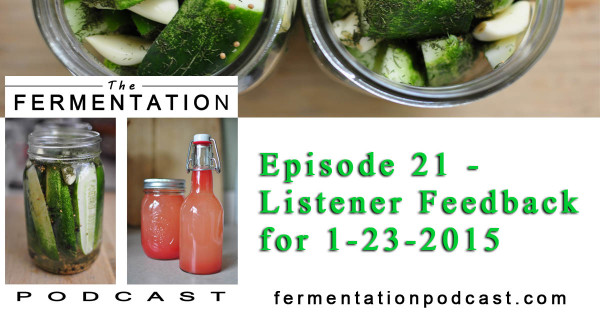
Today is all about you, yes you! It’s the listener feedback show with comments, questions, and just feedback from you, the audience on several different topics in fermentation.
I enjoy getting emails and comments from all of you and I always reply one by one, but since this is a community, it’s nice to spread the knowledge and get feedback and combine ideas between everyone. I think you’ll enjoy today’s show.
TOPICS INCLUDED IN TODAY’S FERMENTATION PODCAST:
- An update on my sourdough starter that Jane Campbell sent me of Fermenters Kitchen
- What do you do with ferments once you’ve made them and what are some creative ways to incorporate these into other foods?
- The idea of dehydrating ferments as a way to rescue them from going mushy
- Does cooking kill the probiotic content and life of the ferments that we make?
- What does “culture starter” mean when found in recipes?
- Someone using fermented chicken feed & making sourdough starter
- Chlorine in city water vs well water and what to do to get chlorine out of your tap water
- Ideas for using pickle salt
- A very kind compliment on the podcast and my thoughts on podcasting in general
- A question about accessing the recipes on this site and whether I’ll be taking them down in the future
- A reminder from the podcast I did on fermented sodas about making up an actual post and how to on making ginger bug and making ginger ale
- How long should I leave my onions fermenting on the counter before putting it in the refrigerator?
- A technical question about downloading the show and subscribing
- One listener’s new start to fermenting pickles in a ceramic crock
- Another listener starting to ferment garlic in honey and also some interesting comments on bone broth, a question of whether you can be vegan and have bone broth, and some history on Lewis & Clark and what that has to do with bone broth
RECIPES MENTIONED IN TODAY’S SHOW:
LINKS FOR TODAY’S SHOW:
- Subscribe to Email (to get updates on blogs & new shows)
- Subscribe on iTunes
- Subscribe on Stitcher Radio (Android, iPhone, etc.)
- Like us on Facebook
- Follow us on Twitter
- Follow our boards on Pinterest
- Jane Campbell’s Fermenters Kitchen FB Group
- Video: Bone Broth and Health: A Look at the Science — Kaayla Daniel Ph.D., CCN
I’d love to hear your thoughts on today’s show so be sure to comment below or if you have an idea for the show, email me at paul at fermentationpodcast.com or just click on the Contact button on top of this page and fill out the form. I look forward to hearing from you!
23 January 2015, 9:26 pm - 1 secondEpisode 20 – Making Sourdough Starter & Recipe Ideas
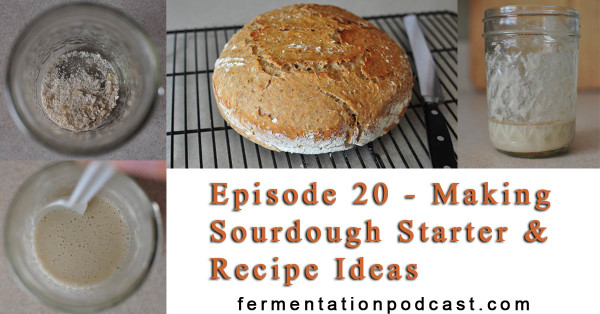
Today I go over how to make a sourdough starter, sourdough bread, sourdough recipes, and general tips and tricks in helping you along in your sourdough adventure.
At the beginning of the year I talked about some resolutions I’d like to go through this year and one was to get more into making sourdough bread. Little would you realize how sourdough starter leads you to making all kinds of other wonderful recipes that you might not have suspected to begin with like sourdough pancakes, biscuits, dumplings, even sourdough donuts, and many of the other tasty things that I go over in today’s show.
I hope you enjoy this episode as I have in putting it together.
TOPICS INCLUDED IN TODAY’S FERMENTATION PODCAST:
- What is sourdough and why is it called that?
- What is the science behind how sourdough works and which microorganisms are involved?
- What’s the difference between sourdough and a commercial yeast?
- How to make a sourdough starter from wild yeast using 3 different techniques
- How to make a sourdough starter from a starter you either bought or got from a friend that’s dehydrated
- Ratios of using your sourdough starter in bread recipes
- Instead of getting rid of your “throw away” starter that you end up with so often I go over sourdough recipes including:
- Sourdough bread & rolls
- Sourdough biscuits
- Sourdough cornbread
- Sourdough dumplings including a childhood memory of my grandma
- Sourdough pretzels
- Sourdough tortillas
- Sourdough crackers
- And some amazing dessert ideas to use your sourdough starter including:
- Cake
- Cinnamon rolls
- Muffins
- Pie crust
- Sourdough donuts!
- Other uses for your sourdough starter
- Finally some tips and techniques to help you along with your sour dough starter
RECIPES MENTIONED IN TODAY’S SHOW:
- Grandma’s Sourdough Biscuits – Food.com
- Sourdough Pretzels from King Arthur Flour
- Sourdough Pretzels by Alton Brown
- Sourdough Pancakes – The Nourished Kitchen
- Sourdough Tortillas – The Elliot Homestead
- Sourdough Crackers – Ragamuffin Diaries
- Sourdough Pie Crust – Cultures for Health
- Sourdough Donuts – Chef In Disguise
- Sourdough Donuts (Vegan Version) – Practical Stewardship
LINKS FOR TODAY’S SHOW:
- Subscribe to Email (to get updates on blogs & new shows)
- Subscribe on iTunes
- Subscribe on Stitcher Radio (Android, iPhone, etc.)
- Like us on Facebook
- Follow us on Twitter
- Follow our boards on Pinterest
- Jane Campbell’s Fermenters Kitchen Website
- Jane Campbell’s Fermenters Kitchen FB Page
- The Kitchn – Making a Sourdough Starter from Wild Yeast
- The Fresh Loaf – Making a Sourdough Starter Using Pineapple or Orange Juice
- The Nourished Kitchen – How to Make a Sourdough Starter from an Established Culture
I’d love to hear your thoughts on today’s show so be sure to comment below or if you have an idea for the show, email me at paul at fermentationpodcast.com or just click on the Contact button on top of this page and fill out the form. I look forward to hearing from you!
16 January 2015, 9:38 pm - 1 secondEpisode 19 – Healthy Ferments & Habits for the New Year
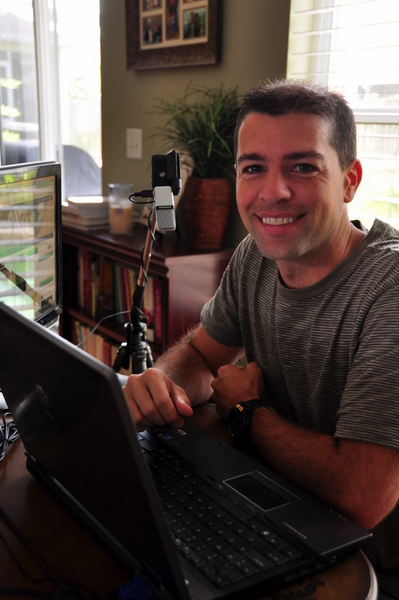
Welcome to the New Year and thanks so much for joining me back again at The Fermentation Podcast!
We’re back in action and I have a feeling that this is going to be an amazing year, especially in the fermentation realm with fermented foods and beverages climbing the list of top food trends that are predicted to be hot this year.
I think it just means that people are actively regaining their health and connecting with their cultures of the past to find the knowledge that’s there that can help them into a healthy future.
Anyways, I’m back on the air and here to go over some of the things I’d like to get into in 2015 including several areas of fermentation that I’ve only recently started talking about.
I wish all of you the best of health and a great New Year!
TOPICS INCLUDED IN TODAY’S FERMENTATION PODCAST:
- Going over a bit of the end of 2014, my talk with Jane Campbell of Fermenters Kitchen and the starter that she sent me in the mail that I’m excited about! (hint: sourdough – well, maybe more than a hint)
- My plan for the new year of several different areas of fermentation including:
- Kimchi, miso, yogurt, beer, and mead
- Building more of a garden that I can use in fermentation
- Getting even more interesting people on the show to keep up with some good fermentation talks in several different areas including
- Homebrew beer
- Cheese making
- Making kombucha and maybe talks from people who run kombucheries
- Fermentation businesses
- Trying out new methods of fermentation including a very kind gift at my doorstep from The Probiotic Jar
- A list of top fermented beverages and fermented foods to get you healthy into the New Year
- A good list of healthy habits that will make your New Year the best it can be to recharge your body and your mind
RECIPES MENTIONED IN TODAY’S SHOW:
- Healing Ferments from The Fermentation Podcast’s Pinterest
- Tempeh from The Fermentation Podcast’s Pinterest
LINKS FOR TODAY’S SHOW:
- Subscribe to Email (to get updates on blogs & new shows)
- Subscribe on iTunes
- Subscribe on Stitcher Radio (Android, iPhone, etc.)
- Like us on Facebook
- Follow us on Twitter
- Follow our boards on Pinterest
- Jane Campbell’s Fermenters Kitchen Website
- Jane Campbell’s Fermenters Kitchen FB Page
- The Probiotic Jar
- Lisa’s Counter Culture
- The Movie (on Hulu): Fat Sick and Nearly Dead
I’d love to hear your thoughts on today’s show so be sure to comment below or if you have an idea for the show, email me at paul at fermentationpodcast.com or just click on the Contact button on top of this page and fill out the form. I look forward to hearing from you!
9 January 2015, 10:04 pm - 1 secondEpisode 18 – Jane Campbell of Fermenters Kitchen
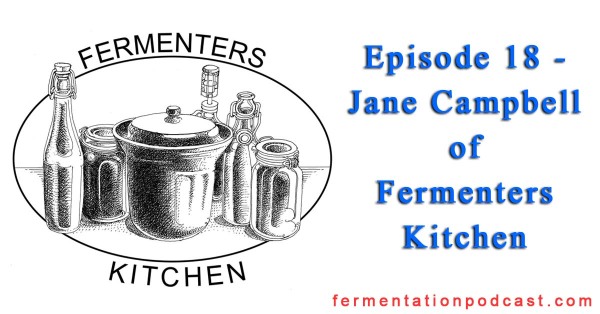
Today I have the pleasure of having Jane Campbell on the show who is the founder of Fermenters Kitchen.
It’s amazing to talk to someone who when you ask the question, “What would you like to ferment next that you haven’t tried?” actually gets stumped because there’s not much she hasn’t tried. In this episode, I also asked the members of the Fermenters Kitchen Facebook group for their questions for Jane Campbell and they supplied them readily!
I hope you enjoy the show and also want to mention that I’ll be closing down for the holidays, but I’ll be back at the beginning of the year to bring you fermentation recipes and ideas to get you healthy into the near year.
Thank you so much for listening and I appreciate every one of you!
TOPICS INCLUDED IN TODAY’S FERMENTATION PODCAST:
- How Jane got started in fermentation over 30 years ago and what her first starter is that she still has to this day!
- How many sourdough starters does just have that she works with (hint, it’s over 15), how often does she bake in the winter time, and what all does she make with these sourdough starters?
- Before the internet and popular fermenting books came out, how did Jane learn the art of fermentation and how did she get started along her path and becoming a collector of fermented starters?
- Talking about the “culture” in the Fermenters Kitchen Facebook Group and how it is to run a large Facebook group
- How a successful Facebook group depends on good admins who are passionate about the group and who love fermentation
- Over Jane’s 30 years, she talks about how fermentation has really started to pick up interest in the country and how her classes now sell out regularly
- What does a normal day in fermenting look like for Jane?
- Jane describes rice koji and the process to make it including using a high temperature high humidity, high temperature cabinet called a koji muro, and also the rice drink amazake
- She goes on to talk about yogurt and how many different yogurt starters (heated and non-heated)
- I ask Jane whether or not she uses a spreadsheet to keep track of all of her ferments or if it’s more of a way of life
- Jane describes what a normal day of food is like for her along with several ferments that she likes to include such as yogurt, jam, sauerkraut and sourdough bread
- She talks about what she likes to include when she’s not quite feeling herself such as things like fire water or miso soup and how many years it’s been since she’s had a cold or the flu
- The topic of miso comes up and she talks a bit about how long (and short) it can take to make different batches of miso and what short and long miso ferments taste like along with making tempeh from chickpeas instead of soybeans
- How you don’t realize how many different things are fermented
- Some of Jane’s interesting ferments including hot sauce and a whole apple ferments that’s turns into an adult ferment because of the alcohol and also her struggle with fish sauce
- She goes into commercial and wild yeasts and talks about wine, mead, beer, and cider and where she gets her all-time favorite honey to make her meads with
- Jane starts listing out some of her favorite ferments throughout the year that she makes including hot sauce, chipotle carrots, mead, sauerkraut, kombucha, black bean paste, fermented garlic, milk kefir ice cream, kombucha freezer pops
- She talks a bit on how long she likes to brew her kombucha and water kefir
- Jane also talks a bit about what she grows in the small amount of growing space she has and what she uses them for in ferments
- For new fermenters, Jane has some advice for you to calm your fears on fermentation on some advice on common mistakes you can make
- Jane talks about explosions she’s had in the kitchen and has advice for being careful with pressurized ferments like kombucha and especially water kefir
- The magic of fermentation and how it can actually deactivate harmful things that would normally make people sick like when you hear about people getting poisoned from a bag of spinach etc.
- What Jane would like to ferment in the future and finally tackle (which after 30 years makes you think, what’s left?!?)
- Jane’s new ideas for events for the Fermenters Kitchen in the St. Louis area including a potluck in April where everyone from the Facebook groups and the website are invited and where they will have demos
- Members from the Fermenters Kitchen Facebook group sent in their questions (with my extra ones mixed in with italics) including:
- How many crocks and ferments do you have going right now? (the answer blew my mind!)
- What size crocks does Jane like and does she prefer crocks versus jars?
- How did you get started fermenting and what’s your motivation for continuing?
- What are some innovative uses for cultures like ginger bug, water kefir grains, etc.?
- Do you have any other passions or hobbies?
- Do non-fermenters notice an odor in your home and how much space is devoted to fermentation and storing your products?
- What distance is sufficient for keeping ferments from cross-over?
- How do you control fruit flies & gnats?
- Can I reuse my brine for carrots, garlic, jalapenos, and such?
- Has fermenting changed your health or anyone that you share your ferments with?
- I think Jane shares the answers of anything she is asked. She is more generous and energetic about mentoring than anyone else I have met in my very fortunate life and career. Ask her where she finds time. She’s a dynamo!
- What’s the craziest fermenting experience you’ve ever had?
- Where do you find the most delicious recipes?
- How do you best prevent dangerous explosions?
- What are your best tips for fermenting?
LINKS FOR TODAY’S SHOW:
- Subscribe to Email (to get updates on blogs & new shows)
- Subscribe on iTunes
- Subscribe on Stitcher Radio (Android, iPhone, etc.)
- Like us on Facebook
- Follow us on Twitter
- Follow our boards on Pinterest
- Jane Campbell’s Fermenters Kitchen (website)
- Fermenters Kitchen Facebook Group
- The Art of Miso Facebook Group
- Sourdough Breads Facebook Group
- Home Winemaking Facebook Group
I’d love to hear your thoughts on today’s show so be sure to comment below or if you have an idea for the show, email me at paul at fermentationpodcast.com or just click on the Contact button on top of this page and fill out the form. I look forward to hearing from you!
19 December 2014, 2:03 pm - 1 secondEpisode 17 – Melanie Hoffman of Pickle Me Too
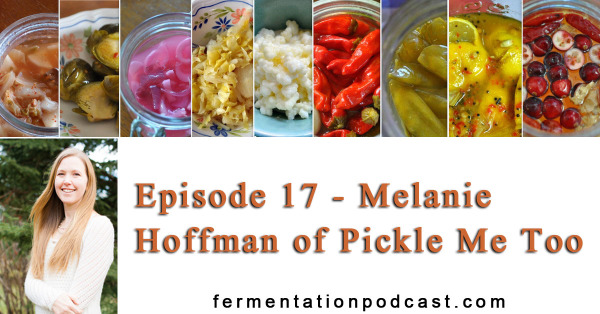
I talked to Melanie Hoffman of the blog Pickle Me Too and what a great conversation we had on several different topics from how what you eat and drink can affect your gut health and how diets like the GAPS diet can actually help with things like autism.
We go into many other things like the wonderful pickles she makes, several different fermented beverages like water kefir, kombucha, cider and even on other topics having to do with homeschooling such as the trivium of grammar, rhetoric, and logic. There’s a lot of other conversation mixed in like health in general and a bit on food safety and mold.
She has such a kind heart and truly wants to help people gain back their health and hopes her story can also help others.
TOPICS INCLUDED IN TODAY’S FERMENTATION PODCAST:
- How did the blog Pickle Me Too get its name?
- How a diagnosis of autism with Melanie’s first son got her started on the path to discovering how food can alleviate the symptoms of autism with the SCD Diet (or the Specific Carbohydrate Diet), then transitioning him to a gluten-free, casein-free diet, and now finally a gluten-free real food diet
- Melanie talks about one of her goals is to help people who might be having the same problems with autism and how the GAPS diet (or Gut and Psychology Syndrome) can help and the main differences between the SCD diet and the GAPS diet
- What Melanie’s family’s eating style today is and the term JERF (Just Eat Real Food) while avoiding gluten protein from any of the gluten containing grains
- Melanie’s long history making fermented foods starting with yogurt and moving onto sauerkraut and how the her Pickle Me Too website got started in the first place with a “one ferment a week” project
- Some of Melanie’s favorite ferments including pickled cauliflower, green beans, and curtido
- How some ferments like cauliflower and garlic put off a powerful “off-putting” smell
- Melanie’s previous method of homemade air locks with Tattler lids and the air-lock method that she prefers today of a glass jar with a hole drilled in the top
- How she started off like a lot of people using whey to get ferments going and then realized that you don’t need a starter on fresh fruits and vegetables since they already contain enough on their own and of a different type
- Using an air lock to discourage mold growth and how some people have gut issues from consuming ferments where they’ve scraped mold off of their ferments and also Melanie’s “good, better, best” idea of fermenting things in terms of health
- She describes her and her husband’s homestead on their 15 acres, 2 of which they rent out to farmers following organic methods and some of the things they produce and then ferment like green beans
- The idea of using local farmers markets to gather your fermentables and then return back in a couple weeks and selling those different pickles you can make for a profit
- Melanie runs through how she makes a perpetual broth to help ward off the season flu
- She also talks us through how she makes her hot sauce that she ages for one whole year and how she makes it by the gallons
- Dairy ferments are also a regular staple in her household such as dairy kefir and yogurt
- Melanie talks about the large amount of experience she’s had making kombucha and several other fermented beverages like water kefir and how they rotate back and forth between them
- She describes the flavor difference between kombucha and water kefir and also the extreme differences in fermentation times between the two popular drinks and also gives a tip on how to get your kombucha fizzy when you’re bottling it
- We talk a bit on the alcohol in kombucha, water kefir, and other alcohol type of drinks she’s made including hard ciders and wine actually using kefir grains
- Making a sourdough bread starter using kombucha or water kefir
- The controversial topic of how kombucha doesn’t actually have as much probiotics as people think it does and how water & dairy kefir has huge amounts as seen in a microscope by Melanie
- A bit on the topic of homeschooling your kids and how teaching them the valuable skill of “how to think” rather than “what to think” using grammar, rhetoric, and logic is extremely valuable
- Melanie gives some advice for people just getting into fermentation who are nervous about it and also how to start kids early on fermented foods and drinks
- Some of her thoughts on meat ferments like fish sauce and possibly future endeavors into other types of ferments like natto and soybean & rice ferments like miso and tempeh
RECIPES MENTIONED IN TODAY’S SHOW:
- Pickled Cauliflower (Pickle Me Too)
- Garlic Cauliflower (Pickle Me Too)
- Indian Spiced Cauliflower (Pickle Me Too)
- Chipotle Pepper Hot Sauce (Pickle Me Too)
- Spicy Dilly Beans (Pickle Me Too)
- Mexican Cilantro Pesto (Pickle Me Too)
- Perpetual Stock or Broth (GNOWFGLINS)
- Perpetual Soup Bone Broth (Nourished Kitchen)
LINKS FOR TODAY’S SHOW:
- Subscribe to Email (to get updates on blogs & new shows)
- Subscribe on iTunes
- Subscribe on Stitcher Radio (Android, iPhone, etc.)
- Like us on Facebook
- Follow us on Twitter
- Follow our boards on Pinterest
- GNOWFGLINS
- Lisa’s Counter Culture
- Pickle Me Too – Melanie Hoffman
- Pickle Me Too on Facebook
I’d love to hear your thoughts on today’s show so be sure to comment below or if you have an idea for the show, email me at paul at fermentationpodcast.com or just click on the Contact button on top of this page and fill out the form. I look forward to hearing from you!
12 December 2014, 3:06 pm - 1 secondEpisode 16 – How to Make Kombucha Tea & the SCOBY
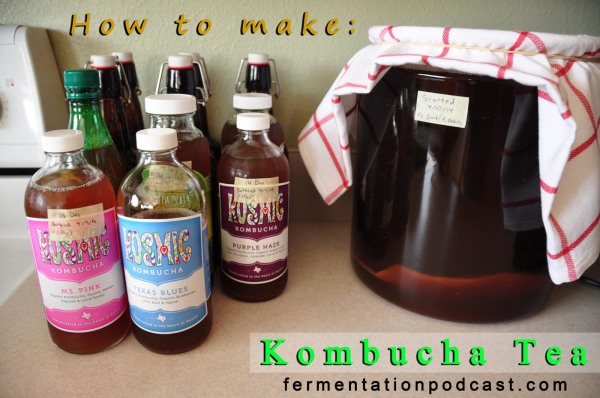
Today I talk all about how to make kombucha tea, what kombucha tea is, and about what to do with a kombucha SCOBY and even how to make one yourself!
If you’ve never tried kombucha, you’re missing out on an interesting flavor that will hit you by surprise with the first sip that you take. It sure surprised me when I popped a bottle open and smelled it for the first time. You hear about how it has a vinegary taste but don’t really believe it until you try it for the first time.
So you go out to the store, pay about $3.50 for a bottle and now you’re hooked! Isn’t there a cheaper way? Of course there is! You can very easily make large batches of kombucha yourself. You can actually save quite a bit of money making your own kombucha since it’s about $3.50 a bottle whereas if you make it at home it might be somewhere around $1 a gallon. Yes, you read that right.
I hope you enjoy today’s show and at the very least, if you have some near you, try it and see if you like it. If you don’t, no big deal, but if you do, it’s so easy to make!
TOPICS INCLUDED IN TODAY’S FERMENTATION PODCAST:
- What is kombucha and what is a kombucha SCOBY?
- Where did I first try kombucha and what I thought about it?
- How do you make kombucha?
- Where do you get a kombucha scoby and can I make one?
- How long do you let kombucha tea brew?
- What are some good kombucha flavors I can try?
- What are the health benefits of kombucha?
- Is there any alcohol in kombucha and how much?
- Now that you’re making so much kombucha, what do you do with all of the mothers that multiply?
- Troubleshooting your kombucha in areas such as:
- What if my kombucha SCOBY gets mold?
- Can I use green tea for kombucha?
- What kind of vessels should I use to brew kombucha such as glass, plastic, and metal?
- Can I use plastic to ferment kombucha in?
- Is metal bad for kombucha and does that mean the same for stainless steel?
- Can I use different kinds of sugar to make kombucha or even honey?
- A little bit about another type of SCOBY that makes another tea similar to kombucha called Jun
- If I want less sugar in my kombucha, should I just start with less?
- Does light affect the brewing process and can I leave it on the counter?
- Do you have to keep ferments apart when brewing them open so they don’t cross contaminate each other?
- What are those stringy things in the kombucha that’s growing?
- Does it matter if the kombucha SCOBY floats on top, is in the middle, or sinks to the bottom?
Basic Kombucha Recipe (ratios for different batch sizes)
2 Gallons:
- 4 tablespoons (1/4 cup) loose tea (16 tea bags)
- 2 cups sugar
- 1 3/4 gallons (7 quarts) water
- 4 cups starter
1 Gallon:
- 2 tablespoons loose tea (8 tea bags)
- 1 cup sugar
- 3 1/2 quarts water
- 2 cups starter
Half-gallon:
- 1 tablespoon loose tea (4 tea bags)
- 1/2 cup sugar
- 1 1/2 quarts water
- 1 cup starter
One quart:
- 1/2 tablespoon loose tea (2 tea bags)
- 1/4 cup sugar
- 3 cups water
- 1/2 cup starter
LINKS FOR TODAY’S SHOW:
- Subscribe to Email (to get updates on blogs & new shows)
- Subscribe on iTunes
- Subscribe on Stitcher Radio (Android, iPhone, etc.)
- Like us on Facebook
- Follow us on Twitter
- Follow our boards on Pinterest
I’d love to hear your thoughts on today’s show so be sure to comment below or if you have an idea for the show, email me at paul at fermentationpodcast.com or just click on the Contact button on top of this page and fill out the form. I look forward to hearing from you!
6 December 2014, 3:32 am - 1 secondEpisode 15 – Thanksgiving Ideas & Recipes with Fermentation
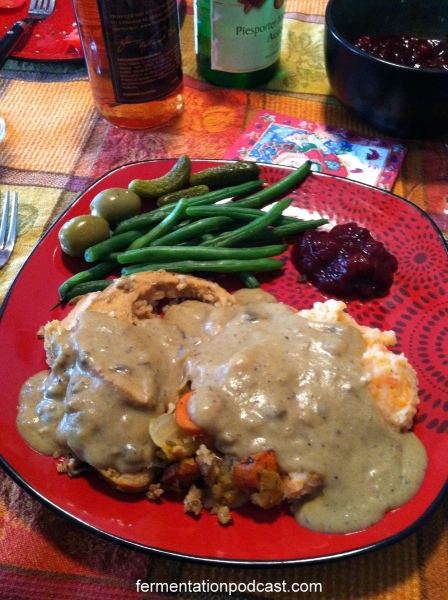
It’s time to give thanks and that means Thanksgiving is close! I decided to put together an episode to give you some ideas on how to add fermentation, fermented foods, and fermented drinks into your Thanksgiving dinner.
You might not think it, but Thanksgiving is actually a great time of the year for fermentation to shine! There are so many fresh foods that can be fermented and added to the Thanksgiving table including desserts. Whether it’s cranberries, stuffing, pies, wine, coffee, or chocolate, there’s several areas where fermentation can fit into the Thanksgiving meal.
I hope you enjoy this episode and don’t forget, time is short! Get started right away to get your ferments going for next week!
The other thing I want to stress is that this is a time for thanks, family, friends, and not a day for going out shopping with all the crazies out there at stores that insidiously decide to open their doors on Thanksgiving day. Stores like that shouldn’t be supported.
Anyways, I wish everyone a wonderful Thanksgiving and don’t get lost too far in your food coma!
Check out Jack Spirko of The Survival Podcast for his Thanksgiving Special Episode 2014 for a great story on why much of what we learn about Thanksgiving is wrong or inaccurate, how Thanksgiving became a way for our nation to heal and reunite after a terrible civil war, why Thanksgiving has been moved around to different dates, and what feasting actually meant 100 years ago. This is a must listen every Thanksgiving and it’s updated every year.
TOPICS INCLUDED IN TODAY’S FERMENTATION PODCAST:
- You have less than a week to get your fermentations started and finished by Thanksgiving!
- Incorporating fermented foods into your Thanksgiving meal
- Fermented appetizers including pickles, carrots, green beans, onions, hummus, pickled eggs
- Getting flavorful brined black and green olives better than what you’d get in a jar or can
- Roasting garlic heads and mixing them with balsamic vinegar and also using balsamic vinegar for cherry tomatoes
- Thoughts on cheese for Thanksgiving
- Encouraging everyone to make their own butter and sour cream rather than buying it
- Side dishes like fermented cranberries sauce, pumpkin butter, apple sauce, sweet potatoes, and pickle soup
- My great-grandpa’s recipe for making sauteed sweet potatoes slices in a cast-iron skillet
- Other side dishes like roasting roots like potatoes, butternut squash, and cauliflowers
- Making fermented mashed potatoes with dill pickle juice
- Fermenting mushrooms and making a nice homemade gravy using fermented mushrooms and soy sauce
- Sourdough bread, sourdough pie crust, and encouraging you to make homemade whipped cream
- After dinner, what desserts can be like pumpkin pie, chocolate along with drinks like ice wine, ice cider, and coffee
- Alcoholic drinks like wine, mead, beer, and cider
- Non-alcoholic drinks like lacto-fermented sodas, ginger ale, traditional Russian kvass, kombucha, and even pickle shots
- And finally general tips for making your cooking more flavorful with techniques to capture, preserve, and enhance flavor
RECIPES MENTIONED IN TODAY’S SHOW:
Appetizers
- Dill Pickles
- Watermelon Rinds
- Fermented Okra
- Fermented Carrot Sticks
- Fermented Green Beans
- Fermented Pearl Onions
- Pickled Cauliflower
- Fermented Hummus
- Pickled Eggs
- Cheese
Side Dishes
- Fermented Cranberry Sauce
- Fermented Pumpkin Butter
- Fermented Apple Sauce
- Fermented Sweet Potatoes
- Roasted Roots & Veggies
- Soup
- Fermented Mushrooms
Breads & Grains
Desserts
Drinks
- Cider
- Fermented Sodas
- Kombucha
Fermented Thanksgiving Recipes In General
Savory Brown Mushroom Gravy Recipe
Ingredient List 1:
1 1/2 cups veggie broth or water
1 onion, finely chopped
1 16oz container cremini button mushrooms or baby portobellos, finely diced and sliced
1 tsp dried thyme
Ingredient List 2:
1 1/2 cups cashew milk (or other nondairy milk)
4 T soy sauce or tamari (or 3/4 tsp salt)
black pepper
1/2 tsp salt
Directions:
- Bring ingredient list 1 to boil in a pot, then simmer until fully cooked.
- Add ingredient list 2 and stir.
- Spoon out a bowl full of chunks and set aside.
- Pour remaining into a blender and blend until smooth or insert an immersion blender into pot to blend until smooth
- Pour chunks back into the gravy
Crock Pot Stuffing Recipe
Ingredients:
2 cups chopped onions
1 1/2 cups thinly sliced celery
1 cup diced tart apple, peeled and cored
1/4 cup butter
1 tablespoon ground sage
1 teaspoon ground marjoram
3 teaspoon salt
1 teaspoon pepper
1/2 teaspoon savory (or sage)
1/2 teaspoon thyme
12 cups lightly toasted bread, cubes
1/2 cup fresh parsley, chopped
1 1/2 cups vegetable stock
Directions:
- In a large fry pan sautee onions, celery and apple in butter until onion is just translucent.
- Stir in sage, marjoram, salt, pepper, savory and thyme.
- Combine vegetable mixture with the bread cubes and parsley.
- Toss well.
- Pour stock over mixture, tossing well.
- Spoon into your crock-pot.
- Cover and cook on high for one hour.
- Reduce to low and continue cooking for 1-2 hours, stirring every hour.
LINKS FOR TODAY’S SHOW:
- Subscribe to Email (to get updates on blogs & new shows)
- Subscribe on iTunes
- Subscribe on Stitcher Radio (Android, iPhone, etc.)
- Like us on Facebook
- Follow us on Twitter
- Follow our boards on Pinterest
- The Survival Podcast – Thanksgiving Special 2013
I’d love to hear your thoughts on today’s show so be sure to comment below or if you have an idea for the show, email me at paul at fermentationpodcast.com or just click on the Contact button on top of this page and fill out the form. I look forward to hearing from you!
21 November 2014, 11:17 pm - More Episodes? Get the App
- http://fermentationpodcast.com
- English
Your feedback is valuable to us. Should you encounter any bugs, glitches, lack of functionality or other problems, please email us on [email protected] or join Moon.FM Telegram Group where you can talk directly to the dev team who are happy to answer any queries.
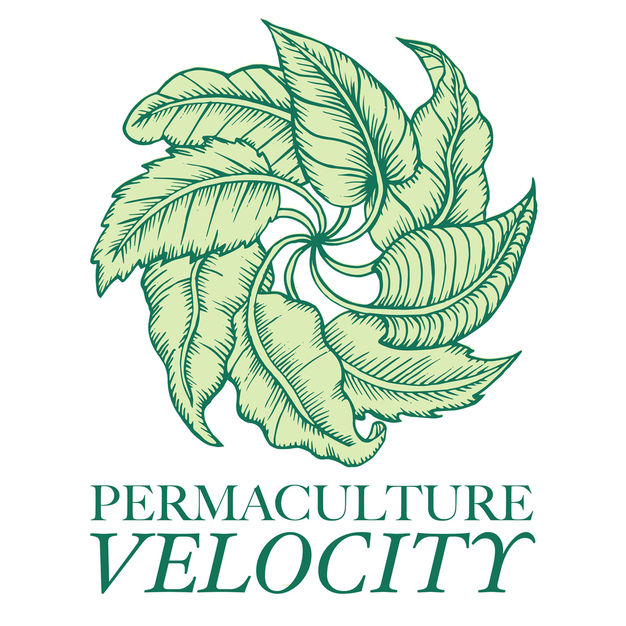 Permaculture Velocity | Homesteading Skills You Can Use
Permaculture Velocity | Homesteading Skills You Can Use
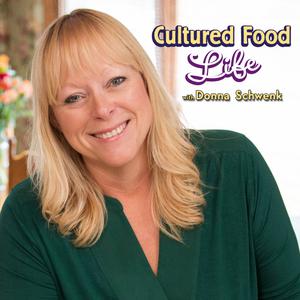 Cultured Food Life
Cultured Food Life
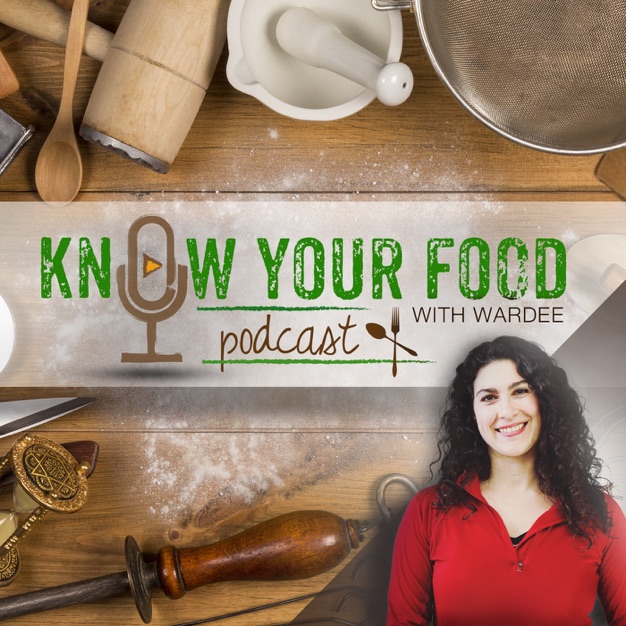 Know Your Food with Wardee
Know Your Food with Wardee
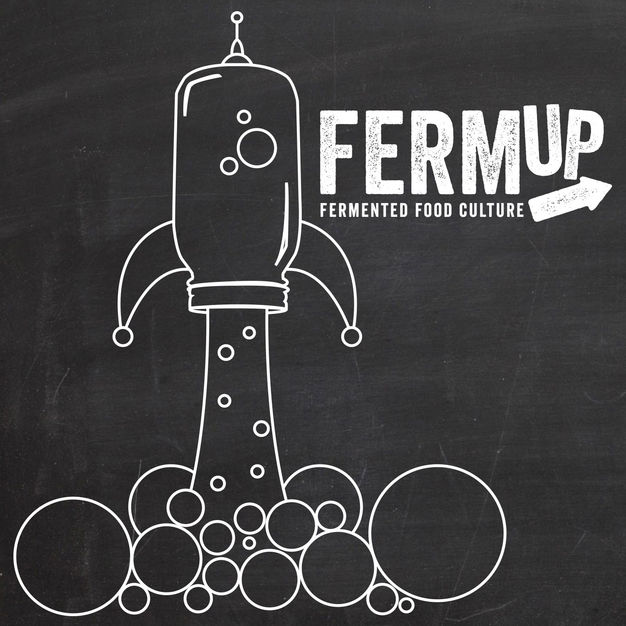 FermUp - The Fermented Food Podcast
FermUp - The Fermented Food Podcast
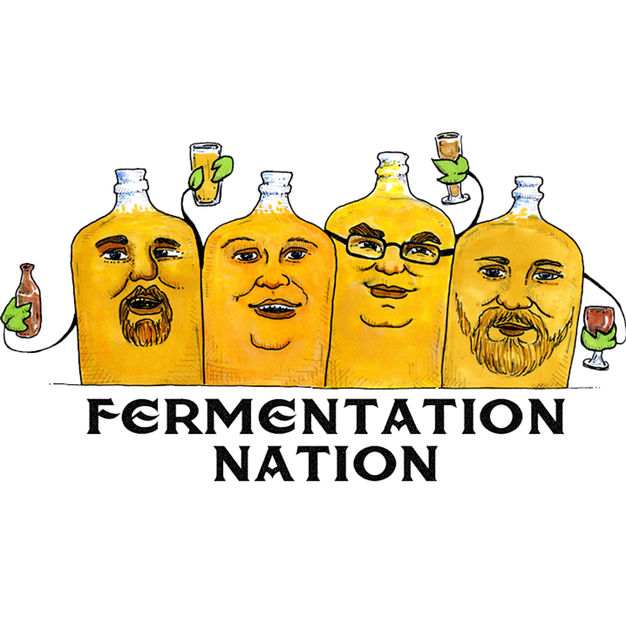 Fermentation Nation
Fermentation Nation